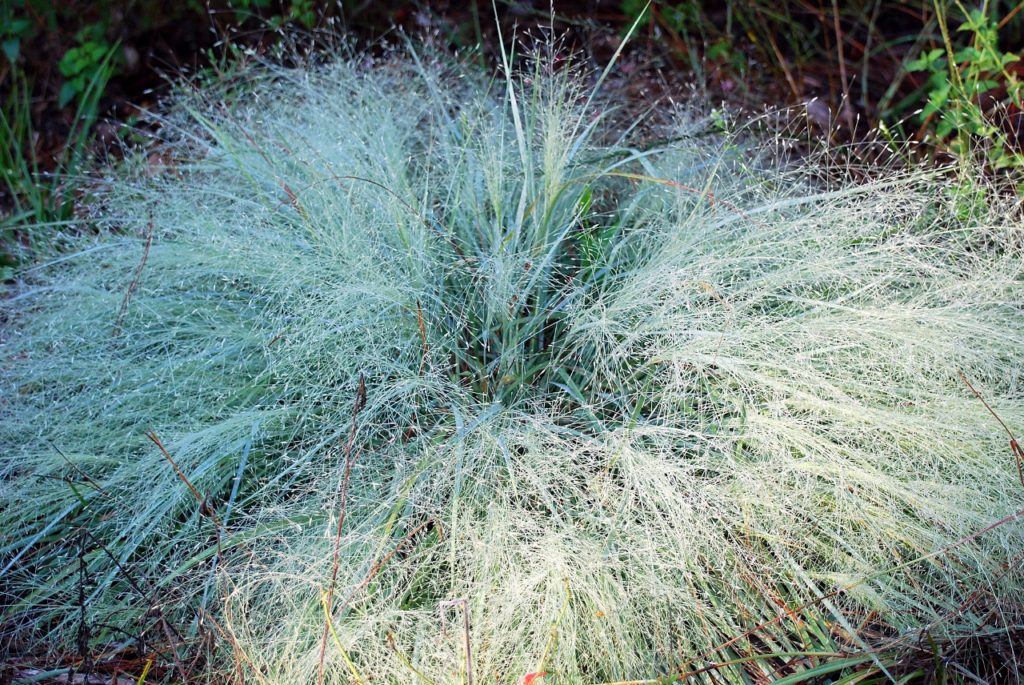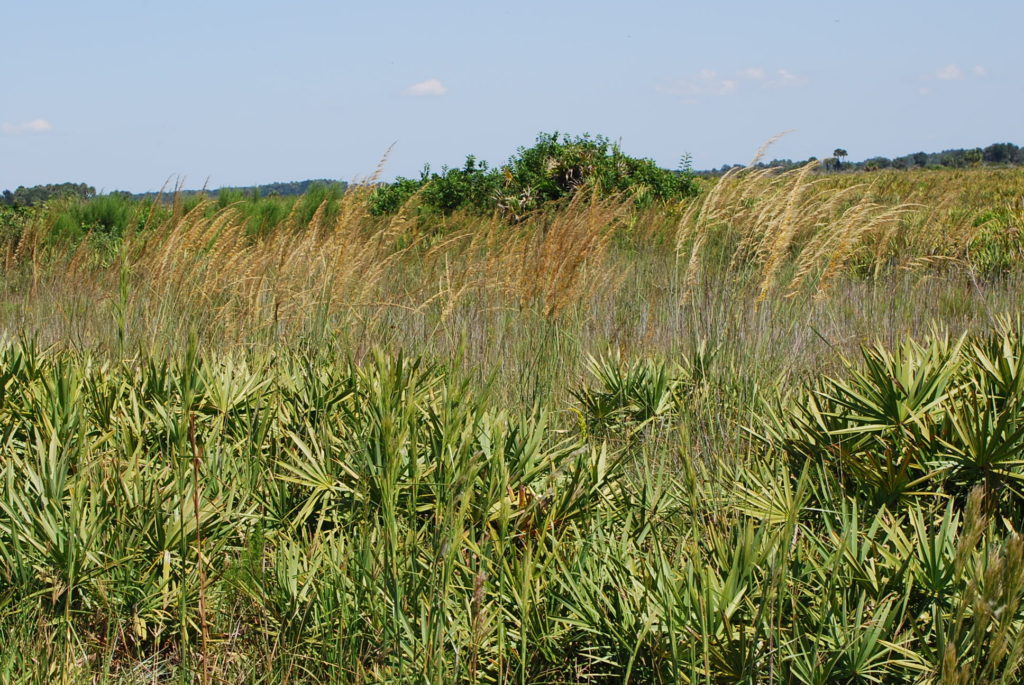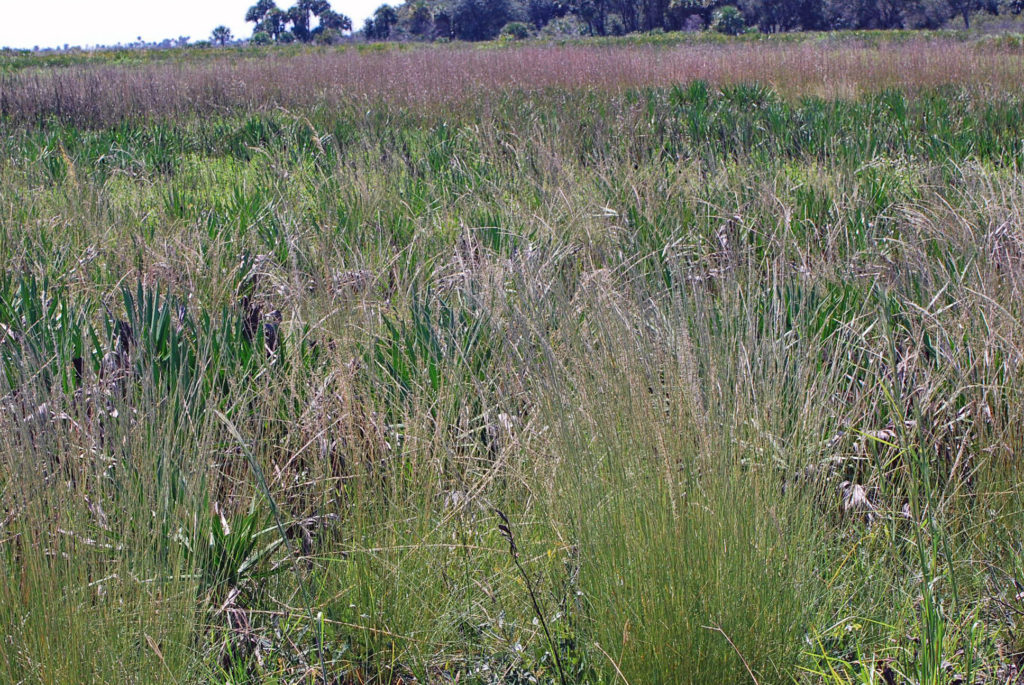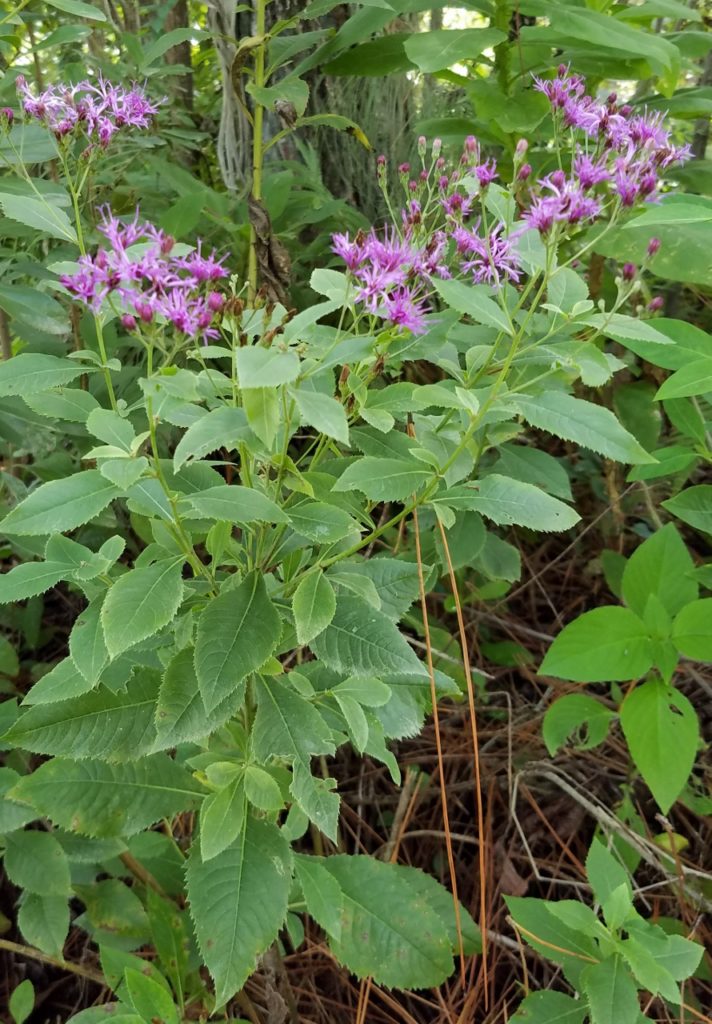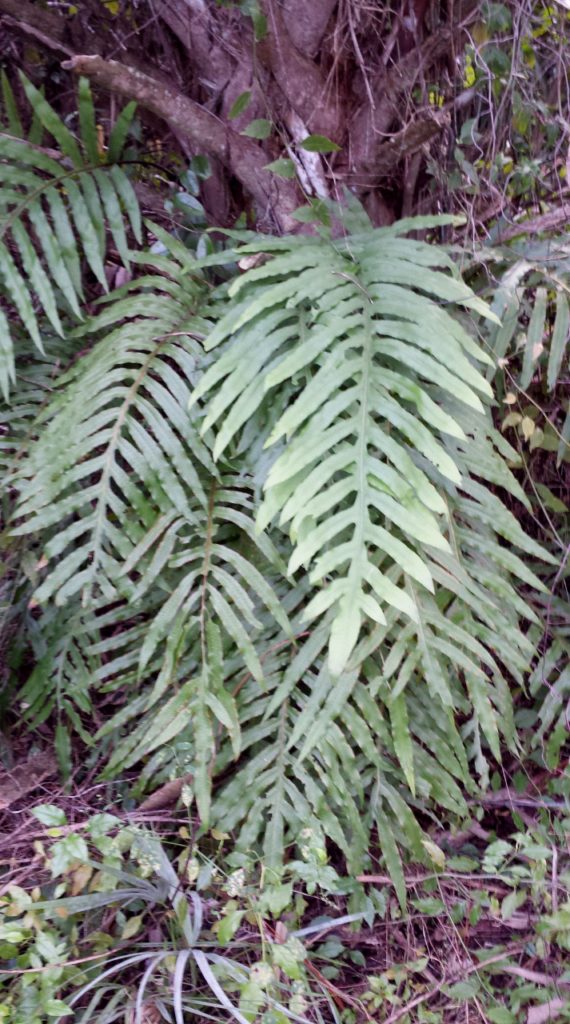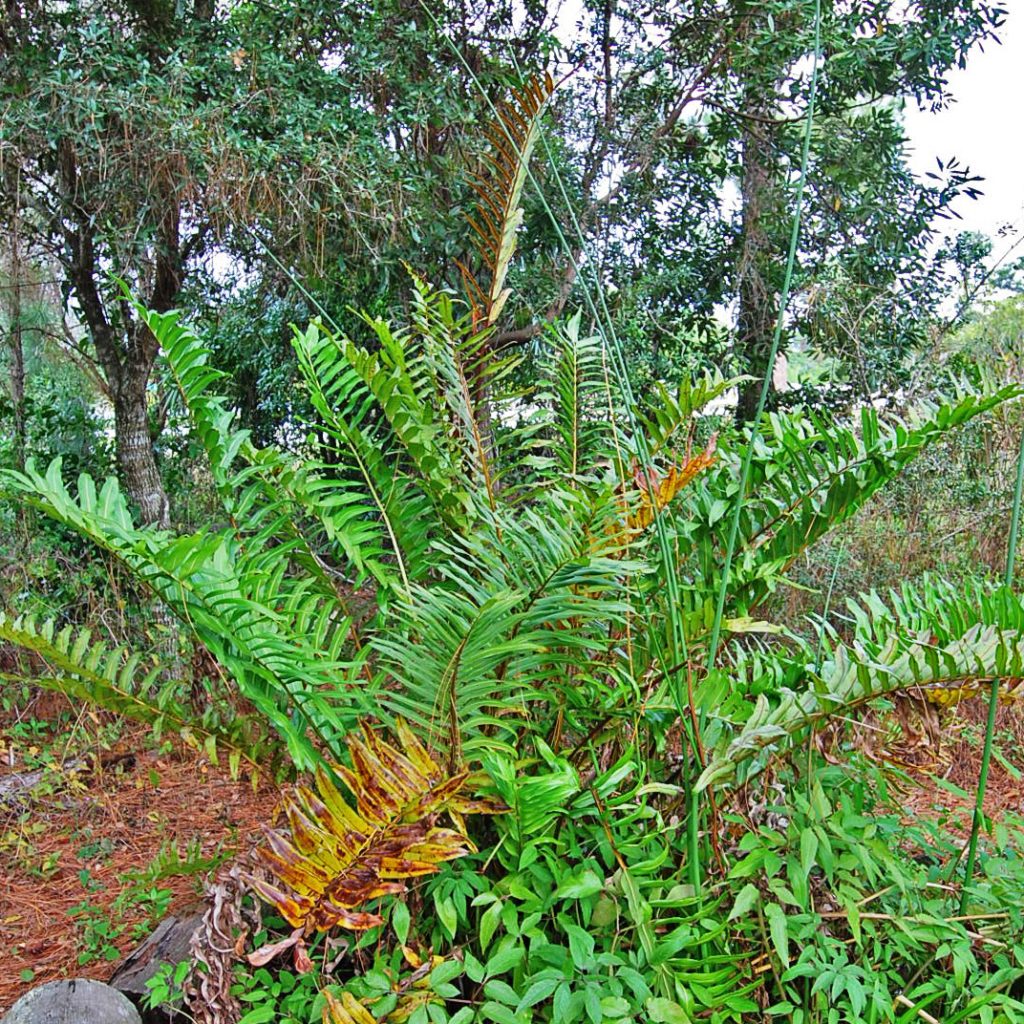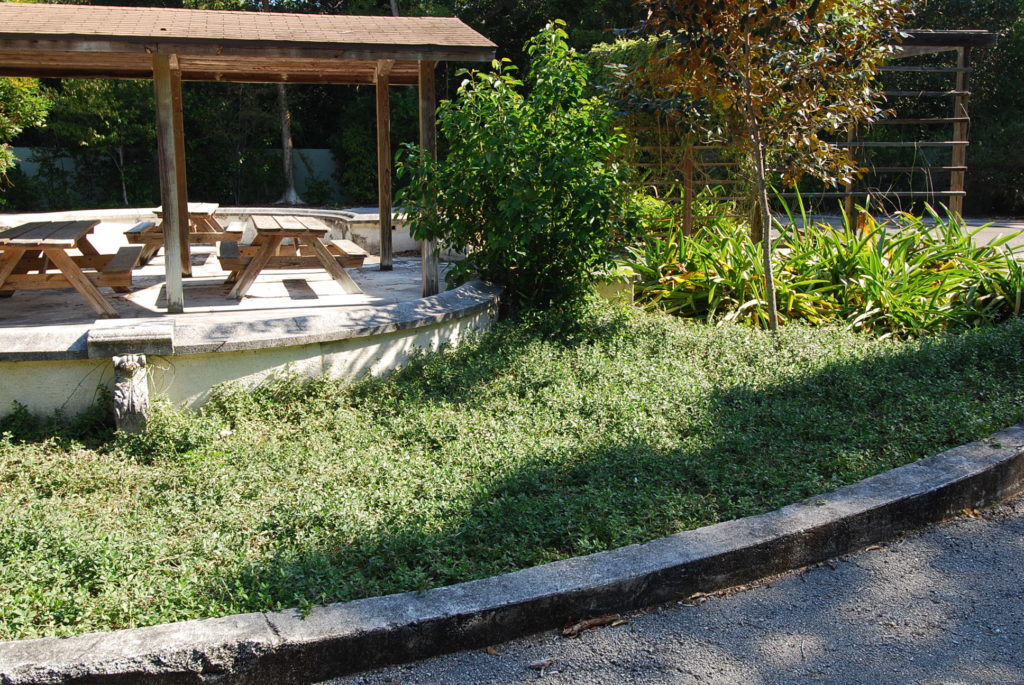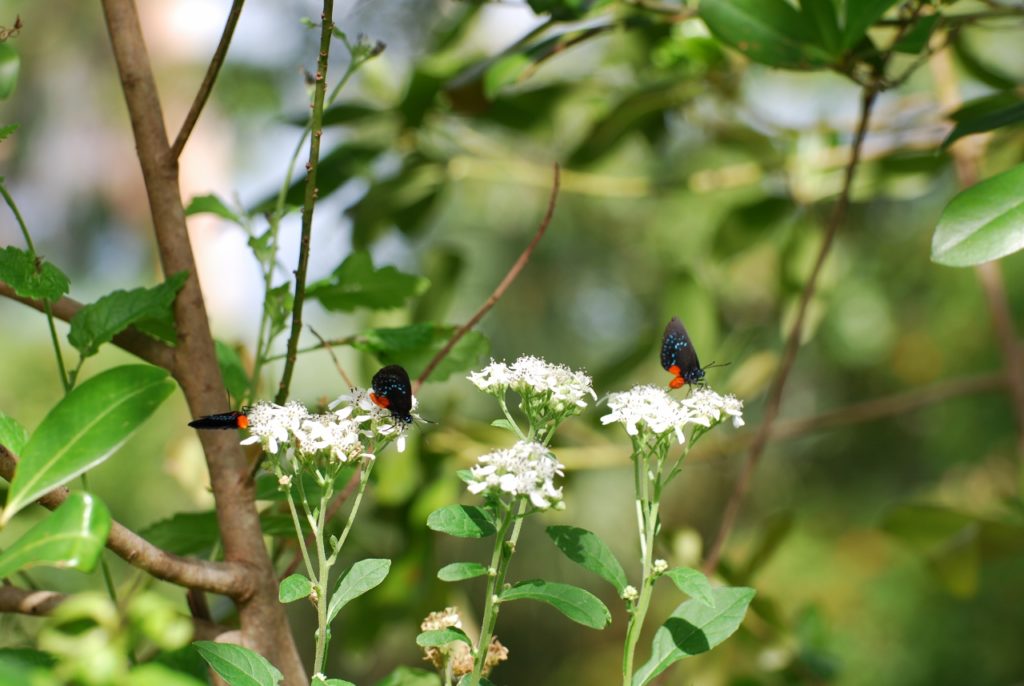Elliott’s Love Grass
Eragrostis elliottii
Elliott’s Love Grass is often seen in moist pine flatwoods, vacant lots and Longleaf Pine communities across all of Florida and the Southeast. It stays below 12 inches and is a beautiful blue color.
It can tolerate drought and short term flooding with fresh or brackish water. Plant far back from the dune; it can only tolerate some salt wind.
This is nice for the edge of a planting. Make sure it gets plenty of light and some moisture. It usually dies after the first year or two. Sometimes seedlings come up or you can easily grow new plants from seed in a vegetable soil mix.
I like to mix this with other grasses, wildflowers and low shrubs. It goes well with Split Beard Broomsedge, Pineland Dropseed, Native Porterweed, Lopsided Indiangrasss, Swamp Fern, Yellow Canna Lily, Florida Lily, Pineland Petunia, Silkgrass, Seaside Goldenrod, Muhly Grass, Sand Cordgrass, Prairie Iris, Red Salvia, Coreopsis and other wildflowers.
I once planted the whole front of someone’s yard, not my suggestion, with this grass. It looked great and went to seed that fall. Unfortunately the ripe seed panicles broke off the plant and blew around the neighborhood. It looked like it had snown and took a while for me to rake them up.
This is also a good source of seed for songbirds.
Click for more info, and here.
Lopsided Indiangrass
Sorghastrum secundum
Lopsided Indiangrass is naturally found in moist areas of our pine flatwoods. The Rocklands of Everglades National Park are swaying with the seed stalks of this beautiful grass in late September. Some of the moist pineland preserves in Palm Beach County have clumps here and there.
The plant has a nice full mat of leaves only two feet tall, similar to a Florida Gama Grass, for most of the year. When it flowers in late September, the stalks rise to five or six feet and have seeds on one side of the top portion. These are golden colored and shimmer in the wind.
Unfortunately they only last about a month before dropping. Some pulling of old leaves may be necessary. I usually burn mine each year, although one year I managed to kill them with this method.
This grass will last for years and makes a nice component to a landscape mimicking a moist pineland. Try mixing with other pineland species like Silkgrass, Florida Lily, Chapman’s Goldenrod, Lovegrass, Splitbeard Bluestem, Pineland Dropseed, Rattlesnake Master, Pineland Petunia, Snow Squarestem, Thistle and Coreopsis.
For drier areas around this that don’t flood, mix with Chapman’s Cassia, Native Porterweed, Silverpalm, Winged Sumac, and Coontie.
Click for more info, and here.
Creeping Little Bluestem
Schizachyrium stoloniferum
Creeping Little Bluestem is the dominant Schizachyrium species throughout most of Florida. It spreads by rhizomes and forms colonies. South Florida Little Bluestem, which is also called Rhizomatous Bluestem, Schizachyrium rhizomatum, is another species found in Dade County. It too spreads by rhizomes. The two species may overlap. Rhizomes are underground, spreading roots.
Both stay below two feet tall, yet may reach three feet when in flower and form attractive, long lived colonies. They are not salt tolerant, but are very drought tolerant once established. Soil should be moist and have some organic matter. Full sun to part shade is best.
These are plants of our pinelands and when used in landscaping provide a natural look. Mix with Slash pine, Saw Palmetto, various Andropogon species, Goldenrods, Pineland Petunia, Florida Lily, Lopsided Indiangrass, Gallberry, Florida Gamagrass, Swamp Fern, Muhlygrass and other pineland species.
Keep them away from shady trees and cut off excess dead leaves which can smother the plant. There is another species called Little Bluestem, Schizachyrium scoparium. Click for more info. This is a beautiful grass found in The Kissimmee Prairie Preserve State Park and a few other places in Florida and other states. See above picture.
This was one of the components of the original mixed grass prairie. It has faintly bluish new growth and wine red flower stalks (Culms) that may rise up to seven feet tall. It is also a good forage grass and provides seeds for songbirds.
If you visit the above state park in September, you will see vast areas of this along with other flowering and seeding species or grasses and wildflowers.
This is one of the few places that you can get a glimpse of what much of Florida once looked like before the land was drained and planted with non native forage grasses.
Click for more info, and here, and here.
Ironweed
Vernonia gigantea
Ironweed or Giant Ironweed is found throughout much of the eastern half of the U.S. and Canada. It is a tall perennial reaching up to 10 feet, yet usually stays below four feet.
The elliptical leaves are up to 10 inches long and have serrations along the edges. Flowers are in clusters of deep purple that bloom in Florida from July to October. There are often some blooms throughout the year.
Giant Ironweed is found along moist woodland edges in full sun to partial shade. It can tolerate a little salt air if planted several hundred feet back of the dune.
This is an important flower for native bees, butterflies and other pollinators including hummingbirds. The seeds are wind dispersed. Several species of moth caterpillars, crickets, aphids and katydids have been seen feeding on the flower heads. These of course become bird food.
The growth is compact with short rhizomes branching off the main root mass. Seedlings come up everywhere in moderate numbers prefering moist or irrigated areas of the yard to germinate.
A woodland path can be lined with these purple flowers to create focal points that entice walkers to keep searching for more. They also make a great backdrop to flower beds.
Deer and other herbivores find this plant bitter and avoid it. It is not poisonous, but don’t eat it.
Try a mix with other woodland plants to create a natural feel to your landscape. Native ferns and grasses, Bear Claw, Frostweed, Seaside Goldenrod, Coontie, Native Plumbago, Red Salvia, Dicliptera, and Florida Pellitory Make good companions.
Florida Pellitory is the larval food for the red admiral butterfly and is edible steamed. It is tasty raw, yet the developing seeds and possibly some chemicals within its tiny leaf hairs may scratch the throat. Click here.
Click for more info.
Hottentot Fern
Thelypteris interrupta
Hottentot Fern has light green leaves that grow to four feet, yet are usually under three feet tall. It must grow in moist to wet soil and can be found naturally from Miami to Brevard County. It is not salt or drought tolerant.
The roots are pencil thin and branch out to form nice tight colonies. I have seen it along the Loxahatchee River and as shown in this picture, the southern edge of a cypress dome. It likes full sun to part shade.
This is a beautiful fern to mix with Marsh, Swamp, Maiden, Giant Leather and Goldenfoot Fern. When planted under a grove of wetland trees like Florida Elm, Dahoon Holly, Pond Cypress, Red Maple, Swamp Redbay and Buttonbush, this makes a wonderful ground cover with the feel of a secret spot in the woods.
You almost expect a deer to jump out of the planting. Or maybe an angry bear that you just woke from its nap. A landscape should have a bit of emotional content, even if it isn’t always pleasant.
I created a planting like this along the eastern side of a friends’ home and with a narrow path running through it, you can almost get lost.
Notice how it even holds its own with Wedelia which has the yellow flowers in this picture and is a bad weed that normally covers everything around it.
Click for more info.
Goldfoot Fern
Phlebodium aureum
Goldfoot Fern or Golden Polypody is found throughout Florida growing on Cabbage Palms and other plants. It can be found growing at the base of a plant if there is sufficient leaf litter to keep the soil moist.
The leaves are up to four feet long and two feet wide with many long lobes. It also grows in South America and the Caribbean and brings its weeping tropical look from there with it.
The golden colored stems grow through the boots of Cabbage Palms and are half an inch thick. The similar looking exotic Serpent Fern, Microsorum grossum, is offered in hanging baskets at the local box stores.
This is an invasive species with a dark pencil thin root and smaller, shinier leaves. I have found large patches of it covering the ground in natural areas. Get rid of it if you find it growing anywhere. Click for more info, and here.
Also, Hand Fern, Ophioglossum palmatum, looks similar to the above two yet is much smaller with thick fleshy leaves. It is found in only a few locations in Florida, usually on Cabbage Palm boots near fresh water swamps. Click for more info.
Once established, Goldenfoot Fern can withstand long periods of drought. Plant it within the boots of your Cabbage Palms, if it isn’t already growing there, on the ground, within large piled bolders or a wall built with open areas between the stones. Place rotted leaves with the roots and lots of mulch for a ground planting.
This plant adds beauty to the landscape and hiding places for beneficial wildlife. It can be mixed with native Boston Fern and other ferns and grasses. Since it grows fairly slowly, it makes a nice ground cover at the base of the house.
Click for more info. and here.
Giant Leather Fern
Acrostichum danaeifolium
Giant Leather Fern is one of our largest native ferns. It is often three feet tall, yet in rich wet soils it can reach 15 feet.
It is found in fresh or brackish marshes from North Central Florida south. Look among mangroves or cypress trees where large colonies can be found. It will often line the edges of canals, rivers and even man made lakes.
The similar, yet more rare Mangrove Fern, A. aureum, is found in coastal areas of Dade County. The spores cover the lower surface of only the upper leaflets compared to all of the leaflets of the Giant Leather Fern.
The soil for Giant Leather Fern must be rich and moist. A pot can be placed in shallow standing water like this small man made pond. When planted along a lake edge, several weeks of flooding are tolerated when many other plants would drown.
If planted upland with added organic matter and irrigation, this fern can replace tropicals like philodendron. It will sucker and form a large colony, yet pups can be cut off and moved to new locations.
For a wet area of the yard, plant a group of Cypress Trees, Pond Apple, Sweetbay Magnolia, Dahoon Holly, Red Maple, Buttonbush and a colony of these lush ferns. Swamp and Marsh Fern, Prairie Iris, American Crinum and Florida Lily and Golden Canna add a nice touch of color.
Take the back roads near Belle Glade and you will see canal banks covered with this fern.
Click for more info.
Fog Fruit
Phyla nodiflora
Fog Fruit, Frogfruit, Turkey Tangle Fogfruit, Turkey Tangle Frogfruit, Creeping Charlie, Capeweed and other local names are used for this plant. I think most people go by Fog Fruit.
This is found throughout Florida and the southeastern states. It is commonly found in moist soils around ponds or low backyard areas and is usually treated as a weed.
Why fight it? This is great mixed with other low “weeds” like Sunshine Mimosa, Pencilflower, Corky Passionvine, Water Hyssop and Browne’s Savory.
Why not have a lawn that provides food for butterflies and other creatures instead of the usual monoculture? Fog Fruit is the larval food for the common buckeye, phaon crescent and white peacock.
A path covered with Fog Fruit may have dozens of white peacock butterflies hovering around it. Watch your step for caterpillars.
Although we associate this plant with moist soil, I have found it growing in dry sand just back from the ocean dune.
Along the west side of A1A at Juno Beach, this plant is growing on non irrigated soil with a 45 degree slope coming off the roadway. I wonder if this isn’t a separate variety since it has larger leaves too?
Many butterflies and other insects nectar on the flowers and it is used as a tea and medicine in other countries. Click for more info. I don’t see information concerning the seeds being used by birds although it is mentioned that insects attracted to the flowers attract many insect eating birds.
The white to lavender flowers, low growth and ability to handle foot traffic make this a great plant to replace lawn in sunny, dry to wet soils. Just make sure that your neighbor knows that he or she already has some in their yard and that you didn’t supply the source of “weed” seeds.
Click for more info, and here.
Dune Sunflower
Helianthus debilis subsp. debilis
Dune Sunflower, Beach Daisy, Beach Sunflower, Beach Dune Daisy…or whatever you want to call it, is one of the fastest growing groundcovers.
Our local East Coast variety is found on the beach and in coastal scrub habitat from Dade County to Georgia. It has two inch wide yellow flowers with a dark center that attracts butterflies, bees and other pollinators.
The seeds are eaten by a variety of songbirds and will persist in the soil for up to five years. When the original plant looks old and ratty, just mow it down or pull it up and keep the soil weeded and mulch free until the new crop germinates and takes over.
Most seedlings germinate in February to June. They like the cooler evenings, a little organic matter and watering twice a week until fully germinated. After they have reached three inches they are on their own.
I think they look best covering the dry swale in front of a home. They don’t block your view of oncoming traffic and are brake screeching, whiplash causingly beautiful when in bloom. Keep them off the sidewalk and other walkways.
Salt spray is no problem, although long periods of salt water soaking is. Full sun and dry soil are best although some organic matter helps. If they are over fertilized, the growth will be soft and spittle bugs, varnish bugs and other insects and diseases may ruin it.
Some weeding is usually needed. Plan on pulling it up in February and either replacing with purchased plants or just wait for and nurture the seedlings. It is OK to mix this with other wildflowers.
Make sure that they are either far enough away not to be smothered by the six foot diameter circles that each Dune Sunflower grows into or use plants that fight back.
I like to mix it with Gaillardia, Beach Verbena, Seaside Goldenrod, Red Salvia, Railroad Vine, Partridge Pea, Beach Creeper, Sea Lavender, Bay Cedar, Beach Elder, Blue Porterweed and various beach grasses planted several feet away. Actually, any beach plant can be added to the mix.
If you want to seed a new area, just collect the seed heads soon after the petals have dropped and they are full and starting to yellow. Dry these on paper, rub the seeds out and sprinkle on the new site. Rake the soil lightly to mix in the seeds and plants will come up over a five year period.
There are two other subspecies of Helianthus debilis that occur on the west coast of Florida. The first is Helianthus debilis, subsp. vestitus Click for more info. and click here. This is rare and looks a lot like the eastern subspecies debilis.
The final subspecies to be aware of is Cucumberleaf Sunflower, Helianthus debilis subsp. cucumerifolius, which also grows on the west coast of Florida. This gets up to six feet tall and when it hybridizes with our east coast subspecies it makes a real mess of things.
Rather than being low, the hybrids are of different heights and the planting becomes rank and unattractive. I did this by accident and it took five or more years of pulling all seedlings from my property before I was confident that it was elliminated. Click for more info.
Click for more info, and here.
White Crownbeard
Verbesina virginica
The six foot tall, winged stalks and up to 10 inch long, deeply lobed leaves give White Crownbeard a bit of a rank appearance. It is during the late summer when heads of butterfly attracting white flowers appear that the value of this plant is realized.
Bees, butterflies and other pollinators visit the flowers. If you allow this plant to go to seed, even though the seed is small, it provides food for painted buntings and other seed eating birds.
After the seeds have all fallen, cut the plants back to the ground. New growth will be dense and attractive. Drought tolerance and the ability to out compete most weeds makes this an interesting background plant.
This is also called Frostweed and is found throughout Florida along canals or the edge of salt marshes in dense colonies. Due to the abundance of seedlings and root suckers that sprout around the plant, this is not recommended for small gardens.
Mass along a lake edge with Elderberry, Salt Bush, or Wax Myrtle. Place within an open area of forest or along a roadway. It can be used as a backdrop along the northern border of a garden. Frostweed may get large numbers of black aphids on the new growth. These are food for predatory insects and do no harm to the plant.
Up north Frostweed exudes sap at the base during a frost which then freezes into the shape of petals or curls. This is why they call it Frostweed. This, of course does not happen in South Florida.
If you have a planting of Coontie and Atala butterflies (which lay their eggs on it) then you may see dozens of these beautiful butterflies visiting the flowers of Crownbeard. These are the butterflies in the picture above.
For more info, click here.
